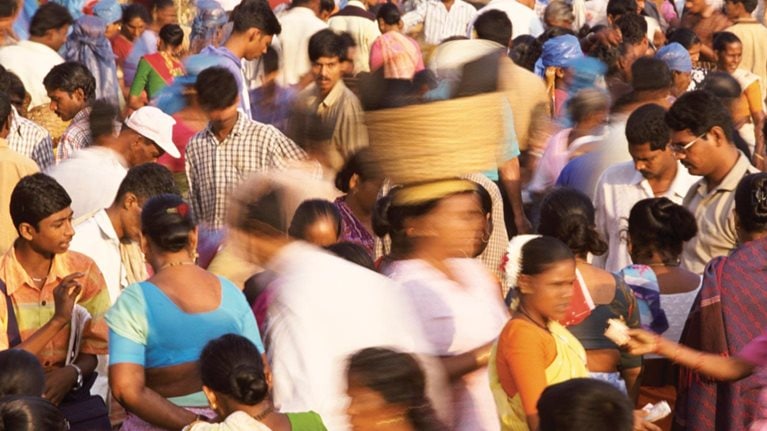Much has been written about the evolution of India's market over the near term, but there has been less discussion of the true long-term potential of India's consumer market.
MGI seeks to understand how fundamental forces of long-term economic growth such as demographics, urbanization, and rising education levels will affect growth in Indian incomes, and how this increased spending power will, in turn, translate into household consumption. MGI examines how Indian consumers will segment by income brackets, how much spending power they will have, what these different groups of consumers will buy, and how the picture will vary between urban and rural India.
MGI's analysis shows that if India continues on its current high-growth path, over the next two decades the Indian market will undergo a major transformation. Income levels will almost triple, and India will climb from its position as the twelfth-largest consumer market today to become the world's fifth-largest consumer market by 2025.
As Indian incomes rise, the shape of the country's income pyramid will also change dramatically. Over 291 million people will move from desperate poverty to a more sustainable life, and India's middle class will swell by more than ten times from its current size of 50 million to 583 million people. By 2025 over 23 million Indians—more than the population of Australia today—will number among the country's wealthiest citizens
The geographic pattern of India’s income and consumption growth will shift too. By 2025 the Indian consumer market will largely be an urban story, with 62 percent of consumption in urban areas versus 42 percent today. While much of this new wealth and consumption will be created in urban areas, rural households will benefit, with annual real rural income growth per household accelerating from 2.8 percent over the past two decades to 3.6 percent over the next two.
Indian spending patterns will also evolve, with basic necessities such as food and apparel declining in relative importance and categories such as communications and health care growing rapidly.
The upcoming changes in the Indian consumer market will create major opportunities and challenges for Indian and multinational companies alike.
Businesses that can meet the needs of India's aspiring middle class, keep price points low to reflect the realities of Indian incomes, build brand loyalty in new consumers, and adapt to a fast changing market environment will find substantial rewards in India's rapidly growing consumer market. Likewise, India's policymakers will be challenged to keep India on the path of economic reform while addressing major challenges in infrastructure and social investment. The rewards, however, will be substantial progress in poverty reduction and a rising standard of living for much of India's population.

.jpg?cq=50&mw=767&car=16:9&cpy=Center)
